First of all a quick apology to all you Hivers following my diving in Chuuk posts, I forgot to tag the Last Chuuk Lagoon post on the San Francisco Maru in Haveyoubeenhere. If you missed it and want a read it is in my blog. Sorry Folks.
So on with the Imperial Japanese Navy Destroyer Oite which translates to Persuing Wind. Built in 1924 this Kamakazi class Japanese destroyer with a displacement of about 1422 tons with a length of 102m and a beam of 11m. Powered by two steam turbines driving twin propellers the greyhound of the sea could exceed 39 knots, over 70km/h so quick for its time. The armament was typical for its class consisting of 3 4.7inch guns, 2 sets of **21inch torpedo launchers, 4 sets of depth charge launchers, and around 10 25mm anti-aircraft guns. **
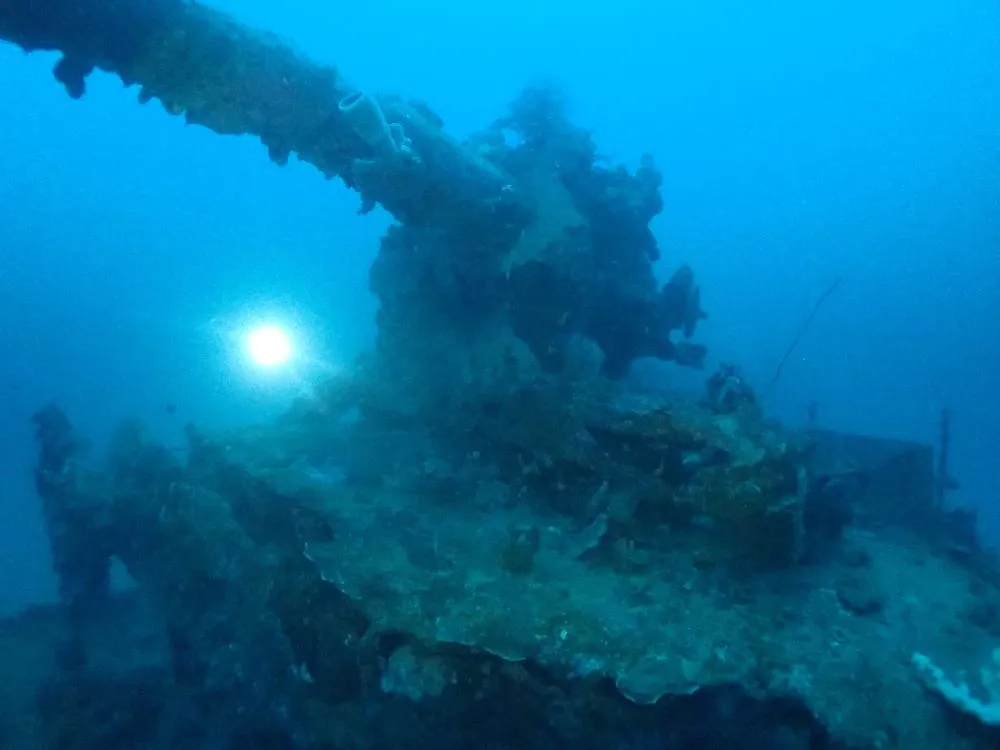
The back story behind the sinking the IJN Oite is a sad one whichever side of the war you were on. The day before Operation Hailstone the Oite was accompanying the IJN cruiser Agano that had been damaged from Chuuk back to Japan. When the Agano was struck by a torpedo from the US Navy submarine USS Skate and sunk. The Oite rescued over 500 of Agano's crew and was told to turn back to Chuuk. arriving on the morning of the 18th of February, Just as Chuuk was being struck by the second wave of US torpedo and dive bombers from the carriers of Taskforce 58 Operation Hailstone. Gun camera footage from one of the planes shows the Oite turning to flee the lagoon but she was struck aft of the bridge by a torpedo, and broke in half and sinking straight away. With the loss of all of the survivors from the Agano and all but 20 of her own crew a total of nearly 700 souls.
Only found in 1986, diving the IJN Oite is a very rare occurrence even today. It is unlikely that any of the regular liveaboard boats ever go there, unless on a specific technical dive charter. The shore-based resorts will only go a few times a year. The wreck is at the very north of the atoll away from all the usual anchorages and wreck sites. Over an hour's skiff ride from the Blue Lagoon resort, once there no marker buoy marks the wreck at the surface so the boat captains rely on transit marks from the outer atoll islands and local knowledge. It is a deep wreck over 60m so only suitable for technical divers.
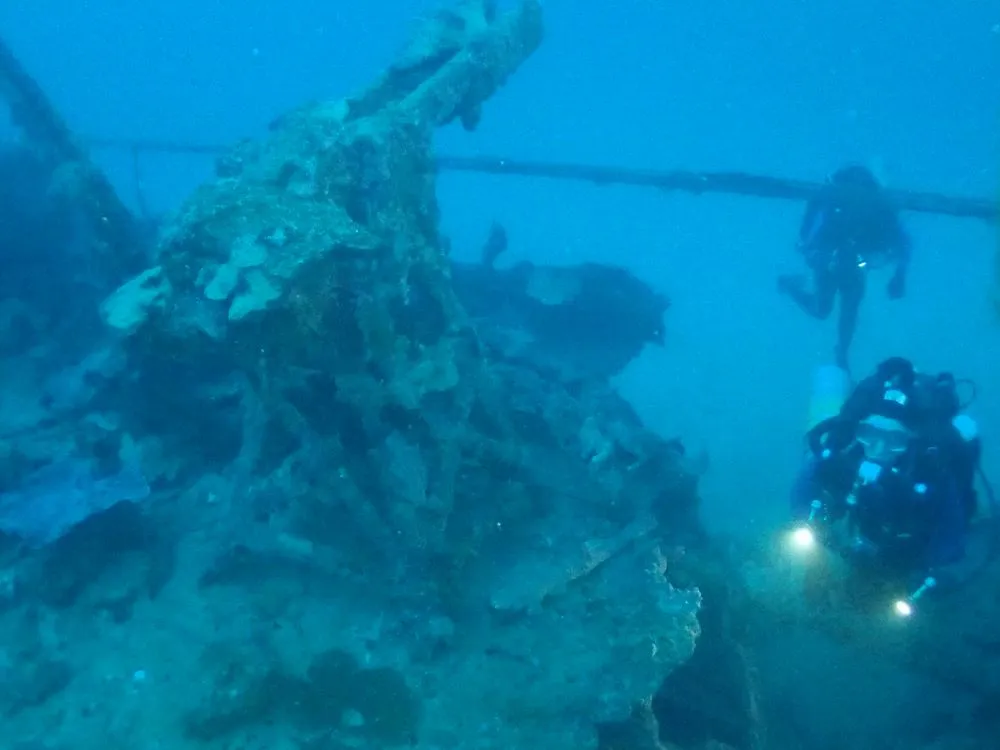
The wreck is split in two the aft section up to roughly aft of the forward funnel, this section sits upright the forward section is about 15m off to the starboard side and is upside down. Once the wreck is located divers slowly descend down the shot line to the aft end.
Dropping down you can get a good look at the twin propellers half-buried in the sandy bottom at around 62m.
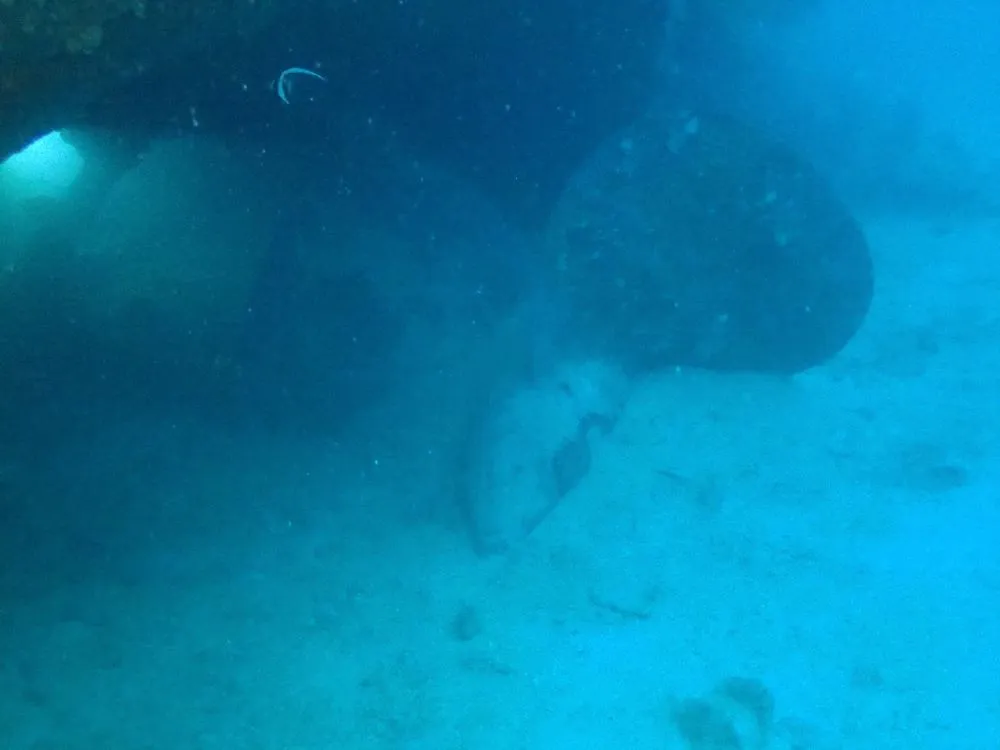
Moving up to the deck and making your way forward a little way the first thing you come across are the depth charges some are still on the deck while others have fallen to the sea bed.
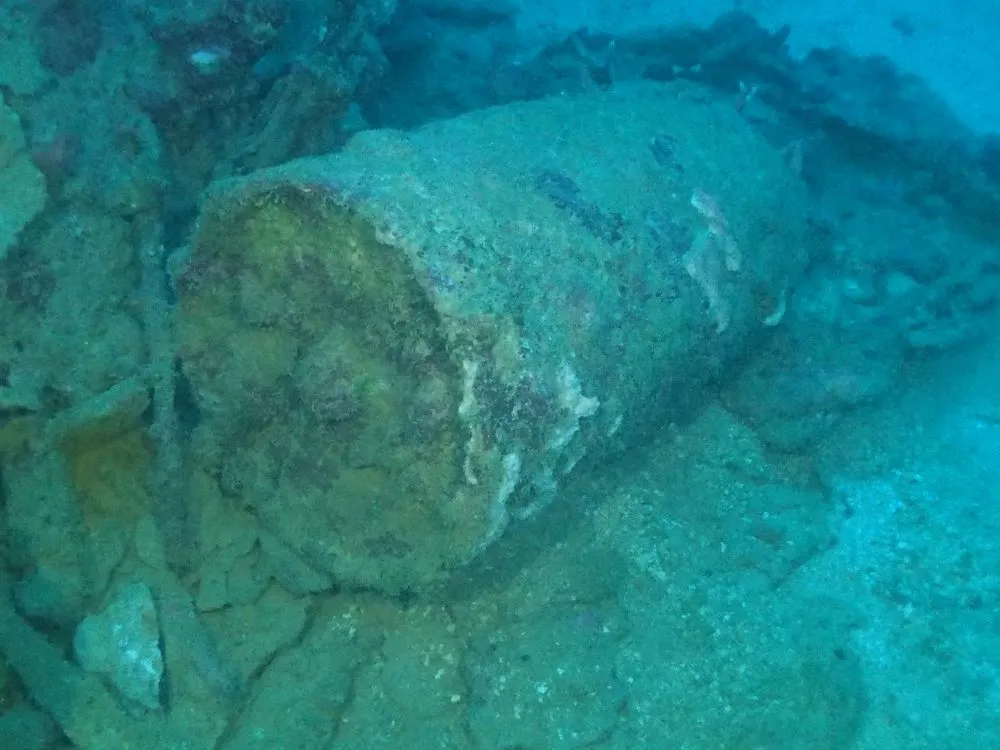
The mid-mounted 4.7-inch gun should now be visible still in amazing condition.
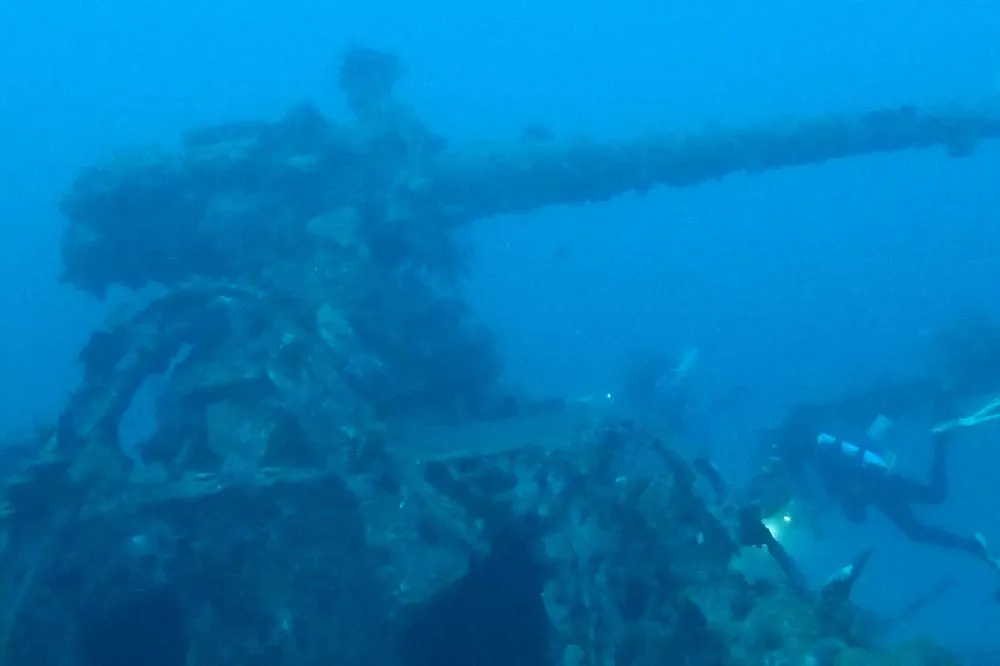
Along with boxes of ammunition still ready to fight off the American planes.
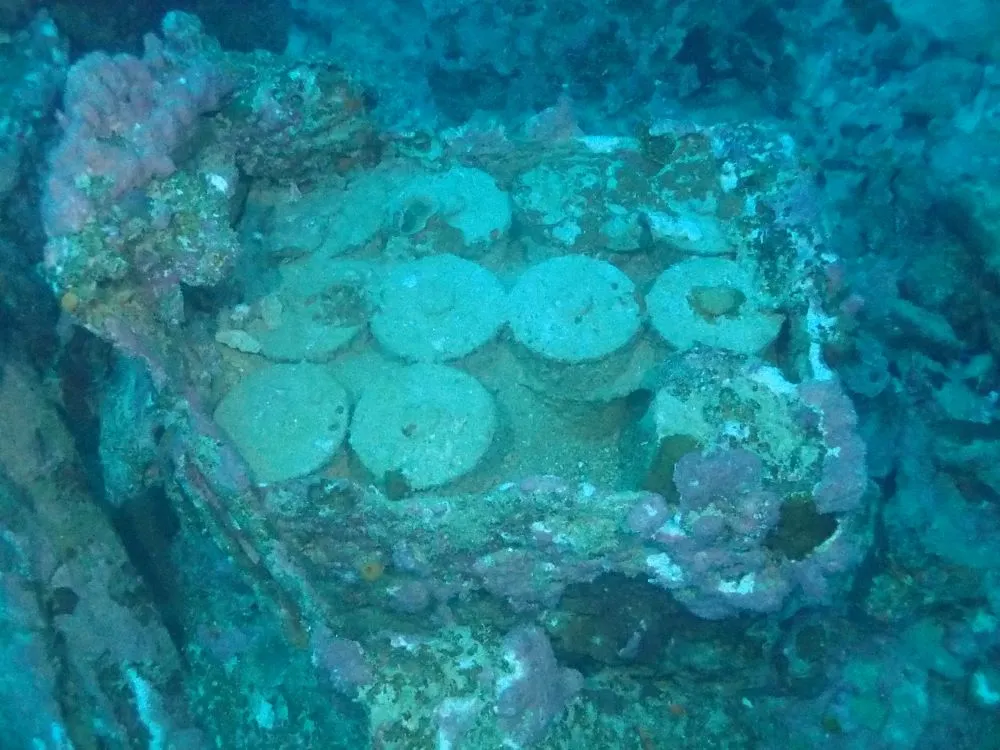
I wonder what were the last orders shouted down this speaking tube to the engine room?
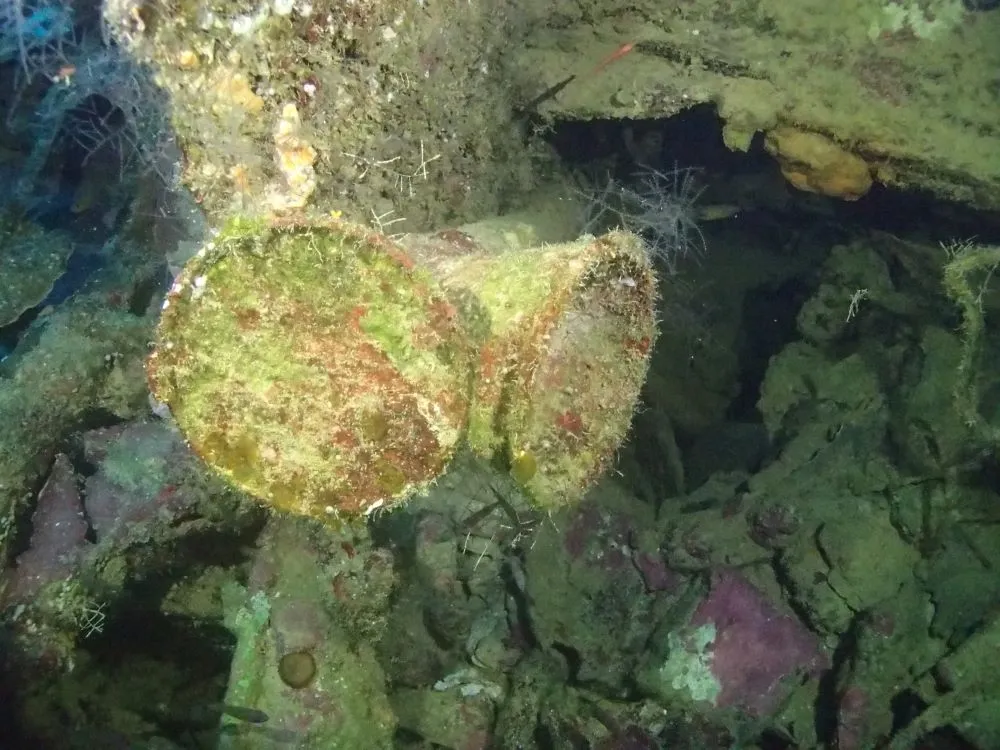
The forward end of the vessel should now be visible and a short swim across the sea bed with shadowy figures of sharks above you.
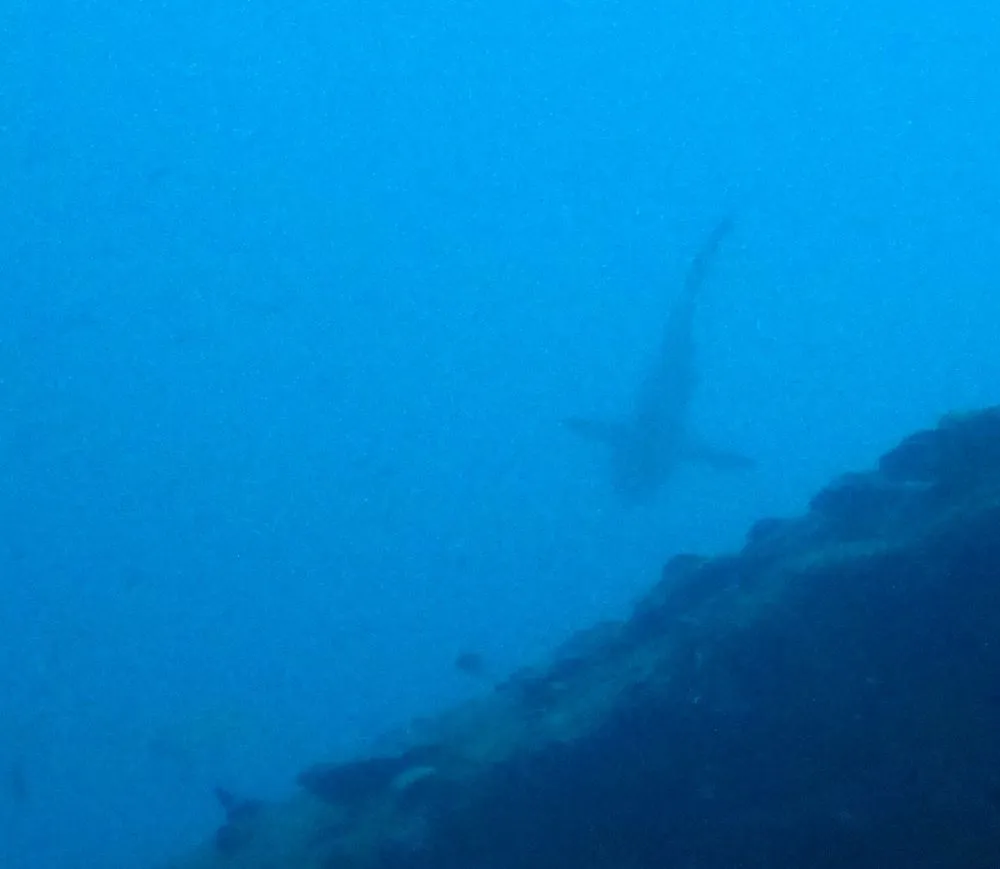
This will bring you to the upturned tangled wreckage of the forward section. It is probable that this is where the majority of the sailors rescued from the cruiser Agano were as the floor is still littered with bones.
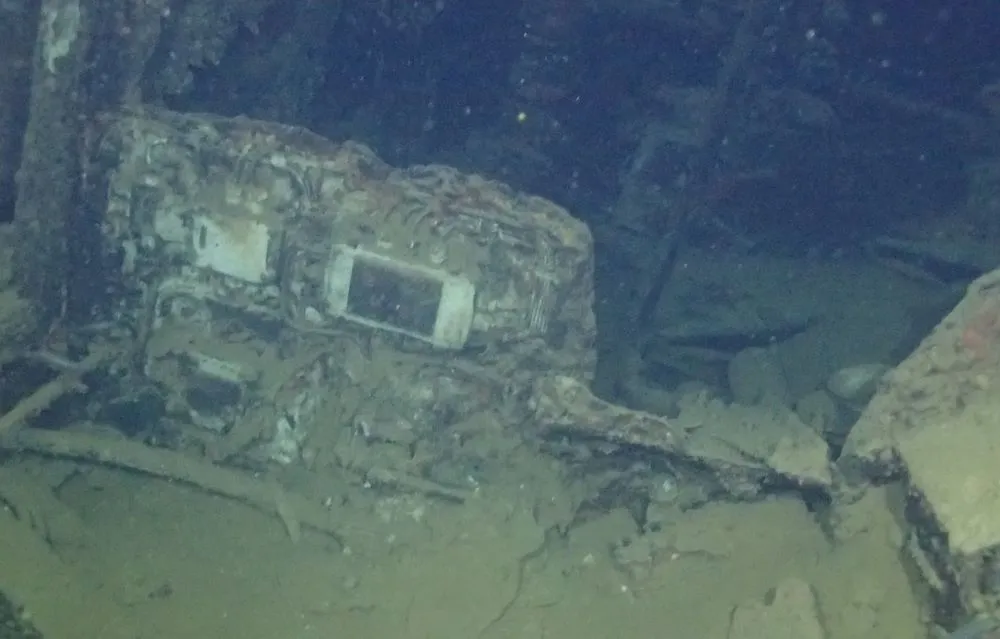
Many wrecks in Chuuk have had the human remains removed by the Japanese and given a Shinto funeral locally or transported back to Japan. However, the Oite is still a bit too deep for and so the remains of 700 souls still litter the wreck.
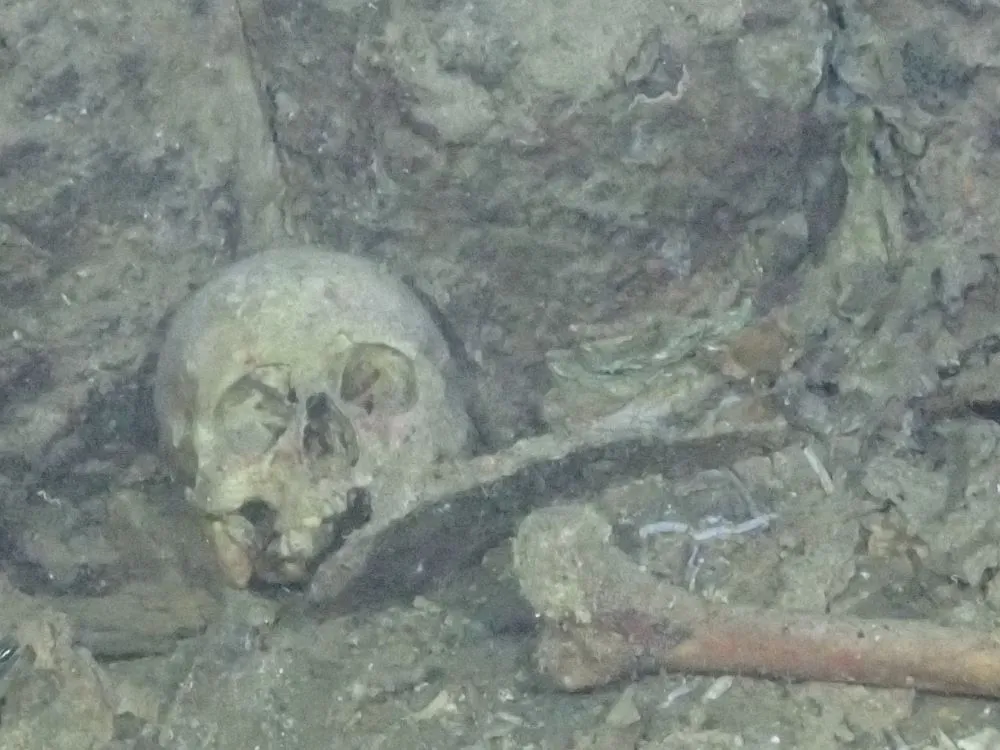
Unlike the merchant ships in Chuuk which are quite bulky, the Destroyer Oite sits very close to the sea bed so your dive is always very deep never getting much above 57m because if this you must use Trimix gas even on a closed-circuit rebreather. Even so, decompression times climb rapidly and an all to short 45-minute dive will require almost 2 hours of decompression. Interesting as the wreck is it is soon time to make your way back along the deck to the shot line and the long trip back to the surface.
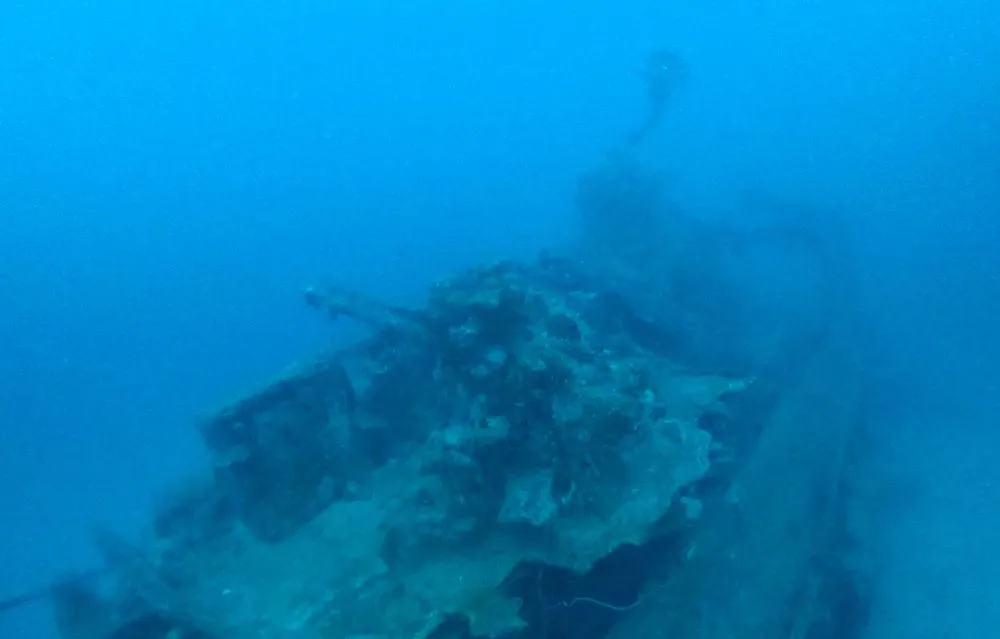
Well Hivers I really hope you enjoyed the trip around the IJN destroyer Oite, it has got to be my personal favorite of all the dives in Chuuk